The Destroyer Velos D-16 is a floating museum, operated by the Hellenic Navy, and focusing on the struggle of the Greek people against the military junta.
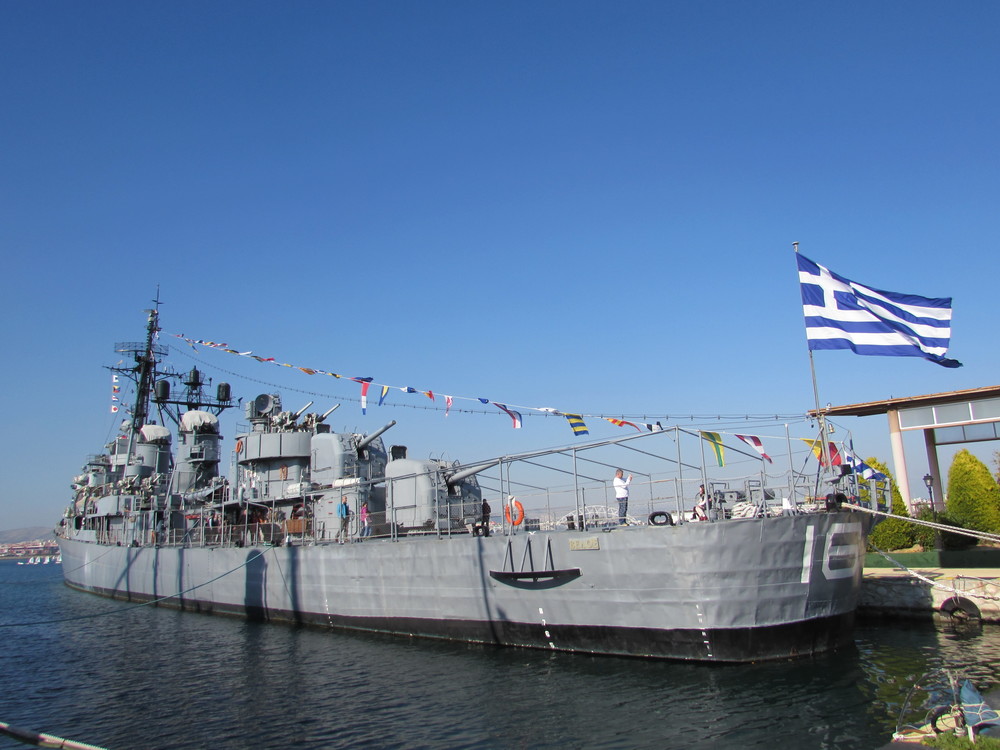
Velos Destroyer Museum Ship
The Destroyer Velos D-16, is one of two floating museums owned by the Hellenic Navy. It is also, to my best knowledge, the only museum in the wider Athens area to focus on the period of the dictatorship in Greece.
The Hellenic navy even go as far as describing it as an anti-dictatorial museum. Which is interesting, as this is an area of Greek history not as well known as the rich ancient history of Greece.
Destroyer Velos D-16 Floating Museum
During my mission of visiting every museum in Athens, one period of history became noticeable by its absence. This was the period of the dictatorship in Greece from 1967-1974.
Sometimes known as the Greek Military Junta, or the Regime of the Colonels, no matter where I looked, I couldn't find an official museum dedicated to this period in history. Until I visited the Destroyer Velos D-16 that is!
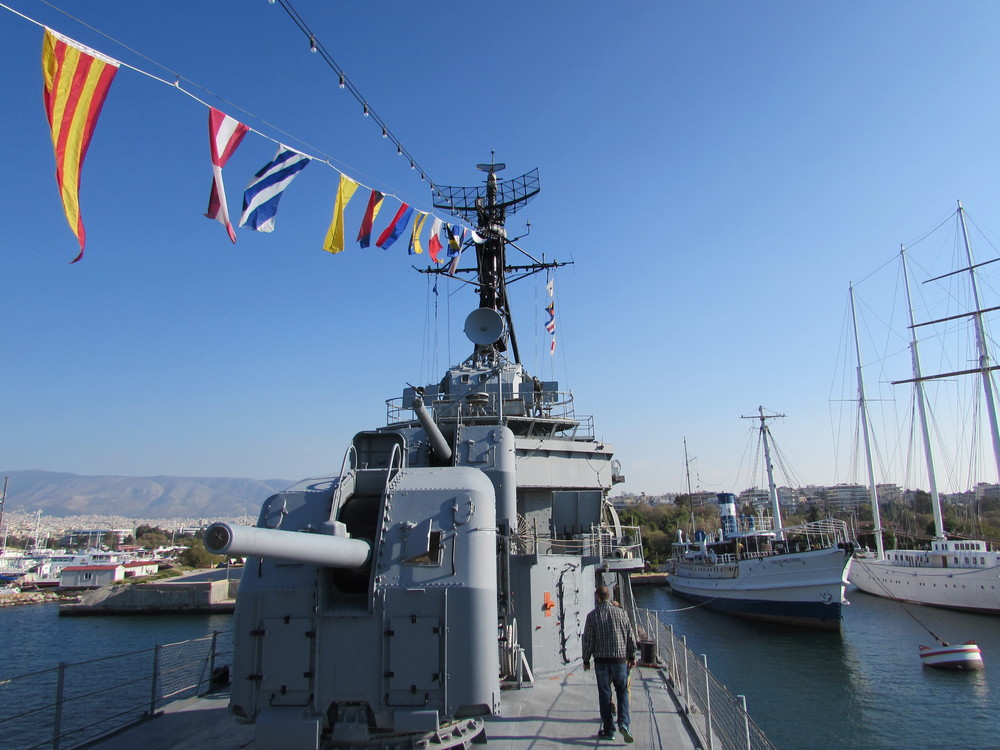
The Destroyer Velos D-16 is a floating museum, currently anchored at Faliro Bay, Athens. Operated by the Greek Navy, it focuses on the struggle of the Greek people against the military junta which lasted from 1967 to 1974.
The Destroyer Velos played an important part in this struggle, and the mutiny of its crew in 1973 arguably helped to weaken the grip of the junta.
About the Destroyer Velos
The Destroyer Velos D-16 didn't start off life in the Hellenic Navy. It was originally a U.S. naval destroyer (USS Charrette DD-581) during World War II, seeing naval combat in the Pacific.
After the war, it was placed out of commission, before being given to Greece in 1959. It was renamed the Destroyer Velos D16 (the word Velos being Greek for ‘arrow').
After entering service with the Hellenic Navy, the ship took part in practically every Greek naval exercise, including NATO exercises. On the 25th of May 1973 though, the captain and crew mutinied in protest against the military junta.
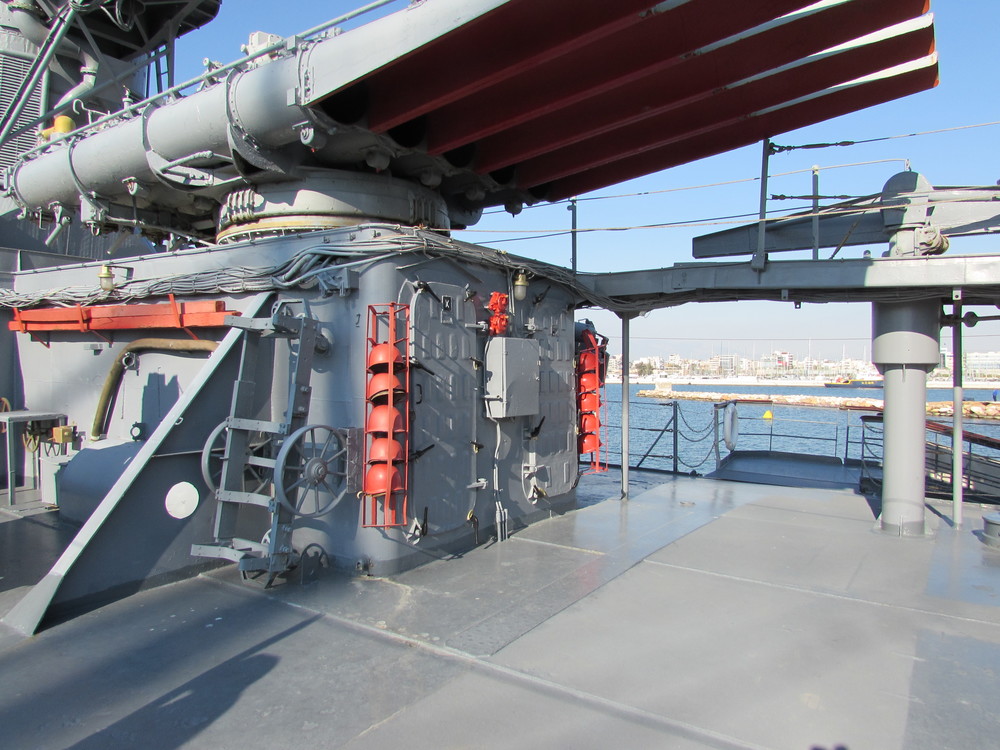
Destroyer Velos Anti-Dictatorial Museum
The Velos floating museum serves two purposes. The first purpose, is that the public can walk around the decommissioned destroyer, and see for themselves the layout of the ship, and imagine what life on board was like.
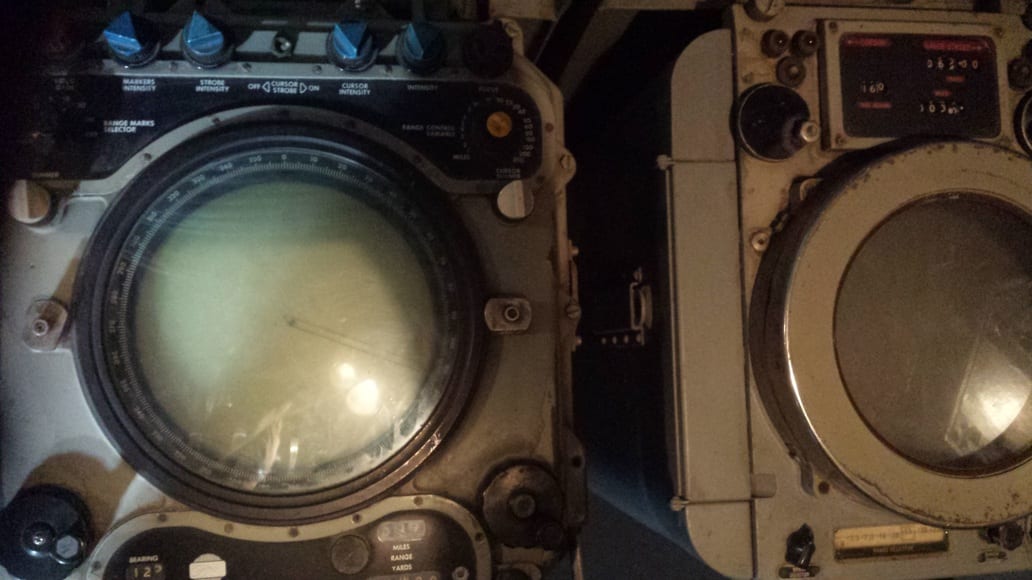 The galley and laundry areas are open to the public, as well as a control room and other areas. At the time of my visit, it was not possible to go below decks to see the bunk-rooms or ship's magazine.
The galley and laundry areas are open to the public, as well as a control room and other areas. At the time of my visit, it was not possible to go below decks to see the bunk-rooms or ship's magazine.
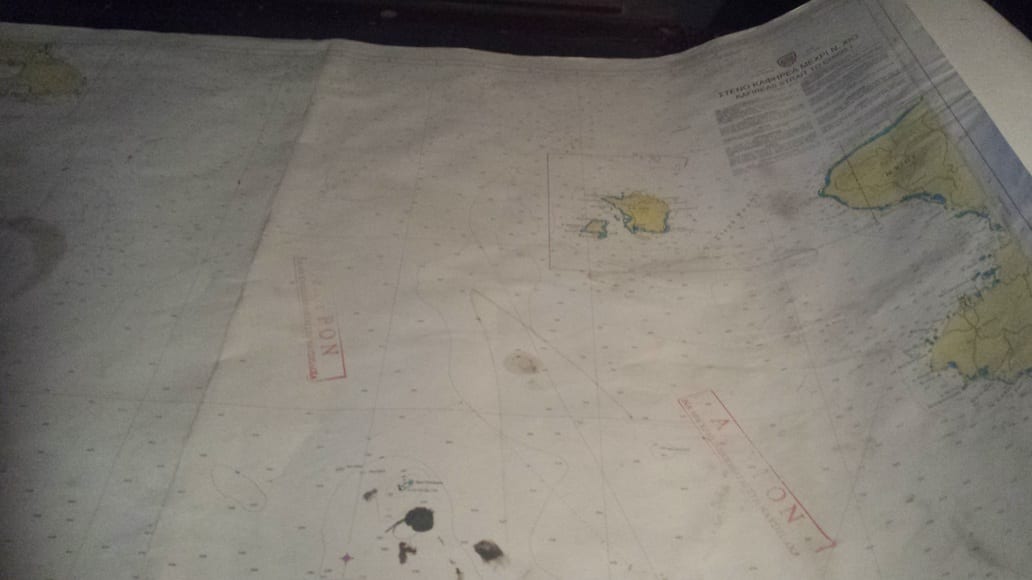
The second purpose of this floating museum, is to describe the importance the Destroyer Velos played in the anti-junta movement. In the Captains Cabin, there are a number of photographs and other documents which describe the events of the mutiny.
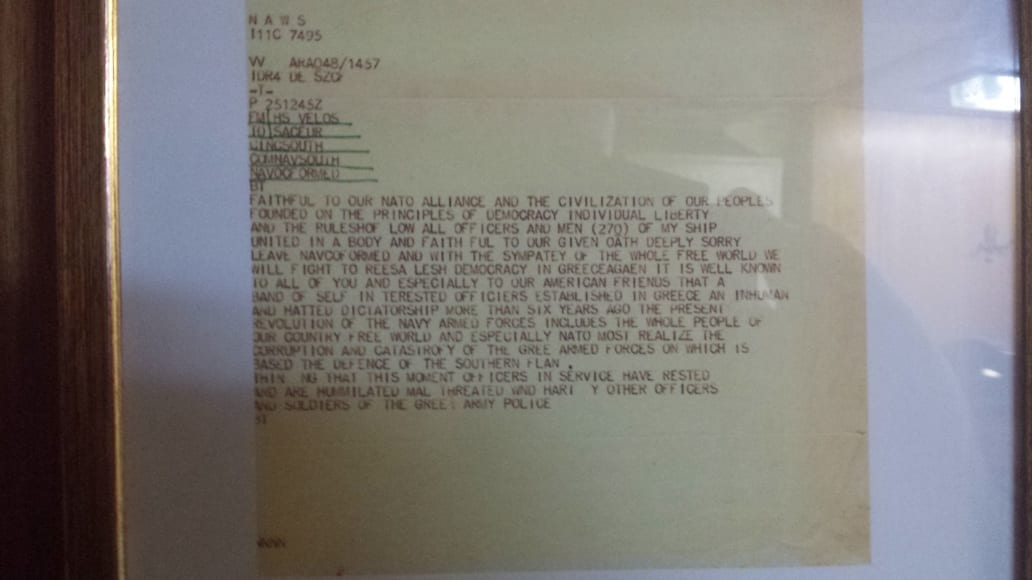
The (much abbreviated!) version of the story is this – The Destroyer Velos was participating in a NATO naval exercise, when on the 25th of May 1973, Commander Nikolaos Pappas anchored the Velos at Fiumicino, Italy, and refused to return to Greece.
The reason for this, is that the captain and other officers had recently discovered that fellow naval officers had been arrested by the ruling Greek military junta and tortured.
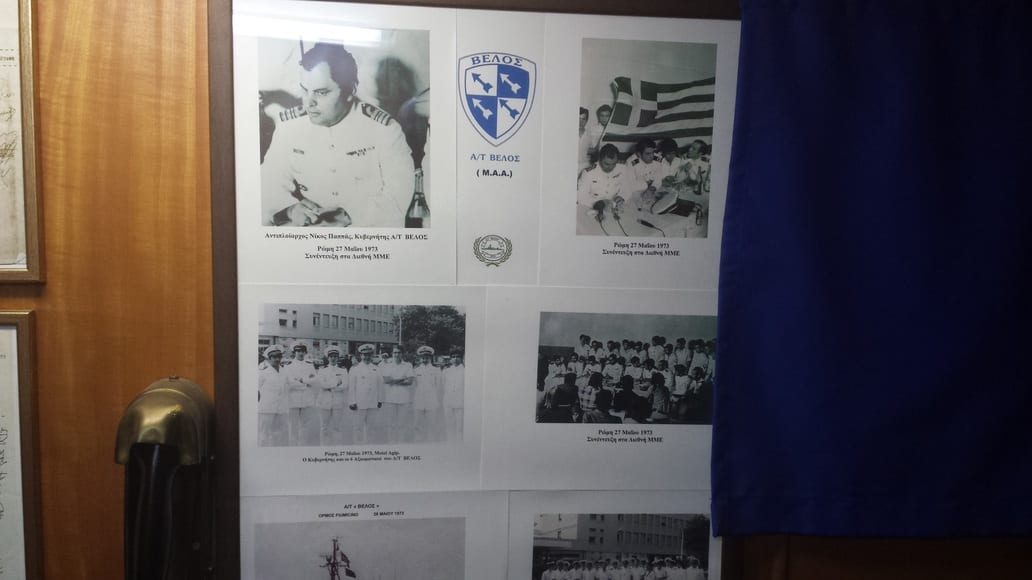
Commander Pappas
Commander Pappas was a member of a secret organisation of military officers opposed to the junta, and had hoped the movement would remove the regime.
With the arrest and torture of several organisation members though, Pappas came to the conclusion that he had to make a bigger statement to change global public opinion about the junta. This would put on additional pressure from the outside.
The plan worked, as many international newspapers started to question the legitimacy of the ruling junta because of the action that Pappas took.
It also weakened the control of the junta, and was one of several key moments which hastened its demise. Military rule ended almost a year later, on the 24th of July, 1974.
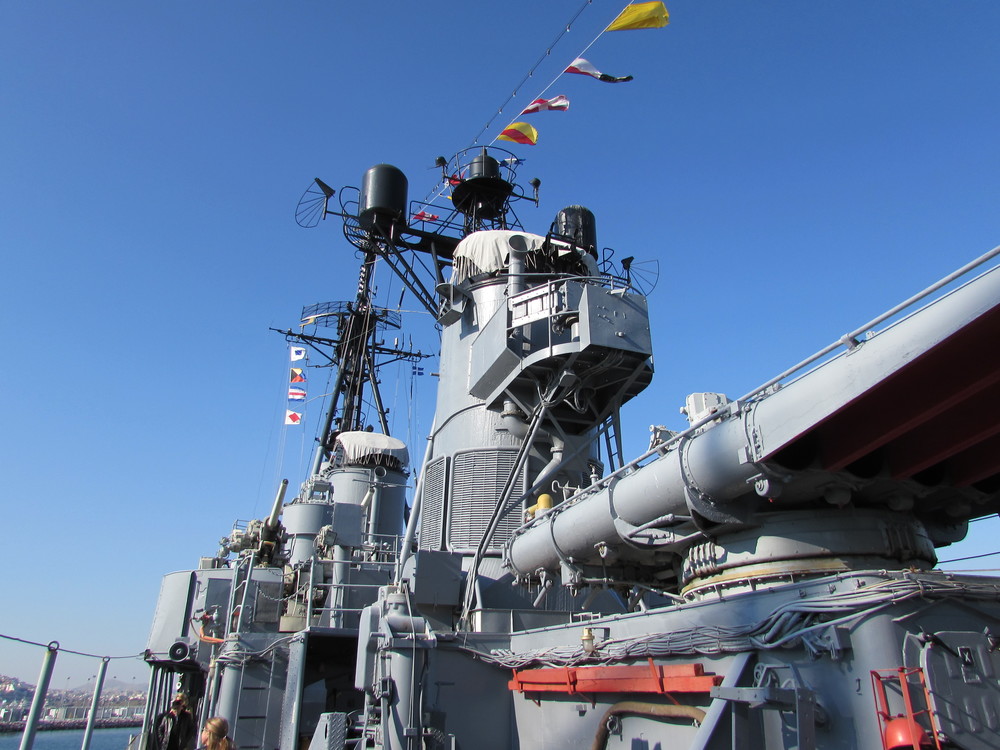
My thoughts on the Destroyer Velos Floating Museum
Discovering that this museum focused on the dictatorship period made me genuinely excited! I fully understand why this period of history is not talked about much in Greece, but it bugged me I hadn't found a museum focusing on it until now.
The Destroyer Velos does that by describing an important event that eventually led to the end of the junta regime. There are plenty of local newspapers from this period displayed, which will definitely be of interest to Greeks.
It is certainly a museum that every Greek should visit, and anyone interested in modern Greek history and naval warships will also love it. You might also find the Athens War Museum to be of interest.
Important note – There are not many signs in English. I would suggest taking along a Greek speaking friend, or consulting the internet on your phone as you walk around in order to really benefit from your visit.
Useful Information
The Destroyer Velos is about 6km from central Athens, in Faliro Bay. This is quite close by to Marina Flisvos, where I recently took a three island day cruise. You can reach the bay using a combination of metro and tram. Alternatively, a taxi ride from the centre will cost about 10 Euros.
Open: M,T,W,T,F: 09:00-13:00 & M,W,F: 18:00-20:00S,S: 10:00-14:00 & 18:00-20:00
You might want to call them first though to check if it is open when you wish to visit – Tel: +302109888211
More Athens Museum Guides
Planning a trip to Athens? You might also want to read about these other museums in the city:
- Acropolis Museum
- Archaeological Museum of Kerameikos
- Epigraphical Museum
- Museum of Cycladic Art
- Museum of the Ancient Agora + Stoa of Attalos
- National Archaeological Museum of Athens
- Numismatic Museum of Athens
- Syntagma Metro Station Archaeological Collection
- Byzantine and Christian Museum (of Athens)
- Benaki Museum -Main Building
- Eleftherios Venizelos Historical Museum
- Jewish Museum of Greece
- Museum of the City of Athens
- National Historical Museum of Greece (Old Parliament House)
- Ilias Lalaounis Jewelry Museum
- Museum of Greek Folk Art
- Museum of Popular Music Instruments
- Frissiras Museum
- The Herakleidon Museum in Athens – Annex Building
- Museum of Engravings and Graphic Arts
- Haridimos Shadow Puppet Museum
- Municipal Gallery of Athens
- Museum of Children's Art in Plaka
- National Glyptotheque
- National Museum of Contemporary Art, Athens
- Technopolis Industrial Gas Museum
- Museum of the Athens-Piraeus Electric Railways
- Greek armored cruiser Georgios Averof
- Tactual Museum of Athens
- Hellenic Motor Museum
- The Bath House of the Winds (Annex of the Museum of Greek Folk Art)
- Museum on Panos Street (Annex of the Museum of Greek Folk Art)
- Ai Stratis Political Exile Museum
- Makronisos Political Exile Museum
- Museum of Greek Gastronomy
- The Museum of Islamic Art in Athens (Benaki Museum in Kerameikos)

 – Dave Briggs
– Dave BriggsDave is a travel writer originally from the UK, and now living in Greece. In addition to creating this guide about the Velos Destroyer Museum, he's written many other guides about Athens and destinations in Greece. Follow Dave on social media for travel inspiration from Greece and beyond:
I was brought to tears after visiting the Velos museum in Thessaloniki. Weeks later, I heard a radio interview by Kapetanios Konstantinos (didn’t catch his last name) who was the pr person during that historical period and has written a book about it (didn’t catch the title of the book either)
Would you be kind enough to provide the full details of the book?
Thank you
C
Hello to Dave Briggs and Takis Pappas — I enjoy reading this site and hope to visit the HNS Velos museum someday. Here is New York, USA as you probably know we also have another great warship museum that also brings together Hellenic Navy history with US Navy World War II history — the Destroyer Escort Museum, built around the Cannon-class destroyer escort USS Slater. Of course the USS Slater, DE 766, was from 1951-1991 HNS Aetos 01. I have not visited it yet because it’s in a different part of the state from where I live but I hope to soon. It would be very interesting to know how the officers and crew of the Aetos were affected by the Velos resistance movement in 1973. Did Admiral Papas know whomever was commander of the Aetos at that time? It would be very inspiring to know about the traditions of democracy from this ship’s association with not just one but two countries.
Dave Hi! I came across your article with interest, as I am the son of the late Adm Nikolaos Pappas the Captain of Velos. You have done a great summary and outlined nicely the reasons to visit!
Unfortunately, Velos was taken away for repairs and now is moved/moored in Thessaloniki in northern Greece.
It is expected to stay there for the next 3 months and probably back to Athens Flisvos following this period.
Your reader’s comments are noted and I will contact the responsible persons and push to have English signs and translations after reading the interest!
Velos does have a very interesting history from the second world and played its part in bringing democracy back in Greece.
You are correct that not much is written about the period and the importance of the internal military movement, to bring back democracy (especially not much written in English). One reason is that the majority of the many people/officers that took part in the movement against the Junta did not seek publicity when they came out of jail or exile following the reinstatement of the democratic government. They were just patriots with pure principles.
Hi,
Thank you for the update. I had heard rumours that the Velos was in Thessaloniki, but I couldn’t track down any information that could confirm it. Many thanks for the clarification!
I loved visiting the Velos and learning a little more about the history. Even better now that the son of the Captain himself has commented here!
It would be great if they could make it more accessible for signs etc for English speaking tourists. Especially I think Americans have an interest in that side of history, with people occasionally sending me emails asking about it.
I look forward to re-visiting the Velos when it’s ‘back home’ after the refit!
All the best
Velos (D16) is no longer at that birth. I can not find any information on what happened to it. According to Google Earth it was moved some time between August 17 2017 and October 8 2017.
Hi Tom,
I’ve asked around and can’t find anything additional. Everywhere is closed at the moment for the elections, but I’ll try to make some calls during the week.